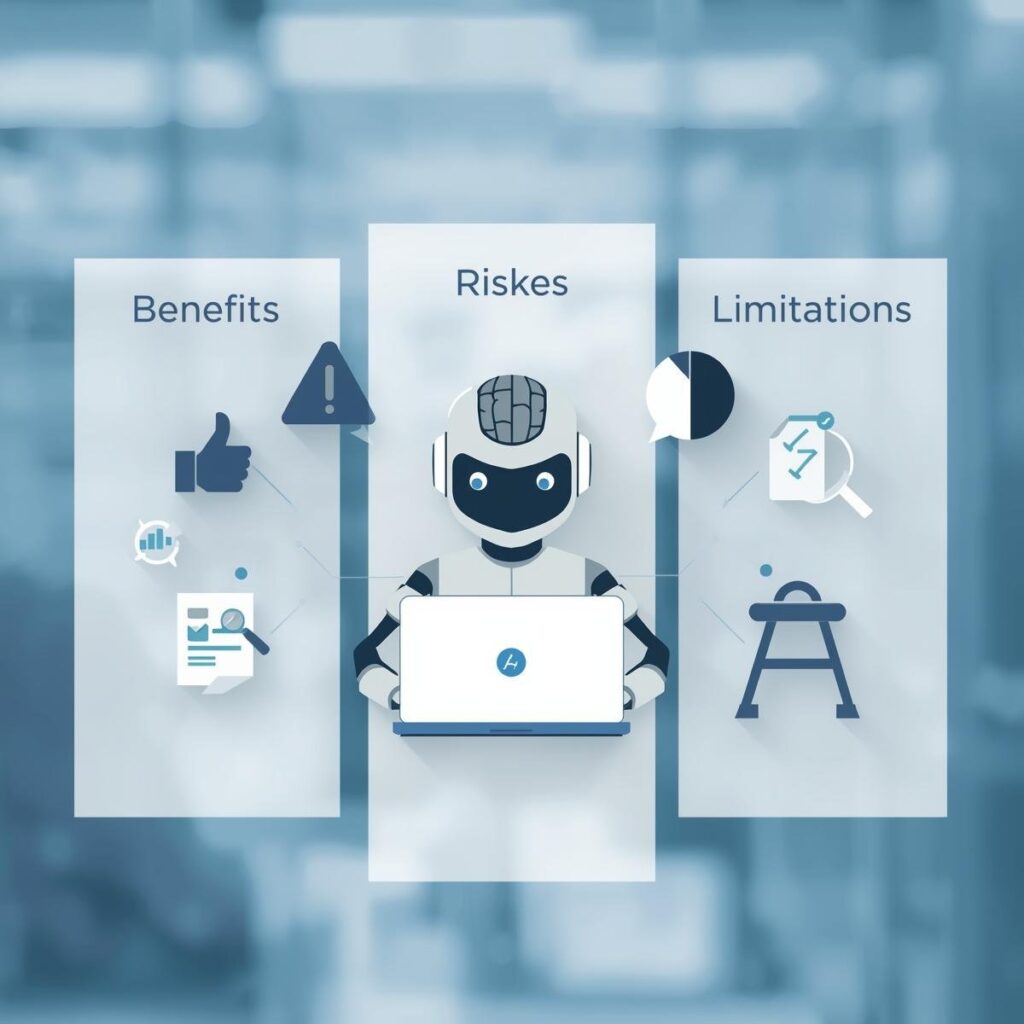
The integration of Large Language Models (LLMs) into Search Engine Optimization (SEO) has ushered in a new era of automation, enabling businesses to streamline processes, enhance content strategies, and improve search rankings. By leveraging LLMs’ capabilities to analyze data, generate content, and optimize websites, SEO automation offers significant advantages. However, it also comes with risks and limitations that require careful management. This article explores the benefits, risks, and limitations of using LLMs for SEO automation, providing insights for businesses aiming to balance efficiency with effectiveness.
Benefits of LLM SEO Automation
1. Scalable Content Creation
LLMs can generate high-quality content at scale, producing blog posts, product descriptions, meta tags, and more in a fraction of the time required manually. This scalability allows businesses to:
- Maintain a consistent publishing schedule to keep websites fresh and relevant.
- Create content for multiple audience segments or regions, supporting global and local SEO strategies.
- Update existing content quickly to align with current trends or algorithm changes.
This efficiency enables small businesses and large enterprises alike to compete in content-heavy search environments.
2. Enhanced Keyword Research and Optimization
LLMs streamline keyword research by analyzing search trends, competitor strategies, and user intent. They can:
- Identify high-value, low-competition keywords, including long-tail phrases, to target niche audiences.
- Suggest semantic variations to build topical authority and capture related searches.
- Optimize content with natural keyword integration, avoiding over-optimization penalties.
This data-driven approach ensures content aligns with search engine algorithms and user needs.
3. Improved Technical SEO
LLMs can automate technical SEO tasks, such as generating schema markup, recommending URL structures, or suggesting internal linking strategies. Key benefits include:
- Creating structured data, like FAQ or Product schemas, to enhance rich snippet visibility.
- Optimizing site architecture for better crawlability and user experience.
- Identifying technical issues, such as broken links or slow-loading pages, for quick resolution.
These automations improve website performance and search engine rankings without extensive manual intervention.
4. Personalization and User Engagement
LLMs can analyze user data to deliver personalized content, boosting engagement metrics critical for SEO. They can:
- Tailor content to specific demographics, locations, or search behaviors.
- Recommend dynamic content, such as product suggestions or localized guides, to increase dwell time.
- Craft compelling calls-to-action that align with user intent, driving conversions.
Enhanced engagement signals, like reduced bounce rates, contribute to higher rankings.
5. Competitor Analysis and Opportunity Identification
LLMs can process competitor websites and SERP data to uncover gaps and opportunities, such as:
- Identifying underserved keywords or topics competitors overlook.
- Analyzing competitor content to suggest improvements, like more comprehensive guides or unique formats.
- Monitoring competitor backlink strategies to inform link-building efforts.
This competitive intelligence helps businesses differentiate their SEO strategies and capture untapped markets.
Risks of LLM SEO Automation
1. Risk of Low-Quality or Generic Content
While LLMs can produce content quickly, there’s a risk of generating generic or low-value material if not properly guided. Issues include:
- Content lacking originality, which may fail to engage users or rank well.
- Over-reliance on automation without human oversight, leading to factual inaccuracies or off-brand tone.
- Potential for duplicate content across websites, triggering search engine penalties.
Careful training and review are essential to ensure content meets quality standards.
2. Keyword Over-Optimization
Automated keyword integration can lead to over-optimization, where content feels unnatural or spammy. This can:
- Harm user experience, increasing bounce rates and reducing engagement.
- Trigger algorithmic penalties from search engines, lowering rankings.
- Dilute topical authority if keywords are used without context or relevance.
Balancing automation with strategic keyword placement mitigates this risk.
3. Misalignment with User Intent
If LLMs misinterpret user intent, automated content may fail to address audience needs. For example:
- Content may target informational queries with transactional material, frustrating users.
- Lack of cultural or regional nuance can alienate specific audiences.
- Overly broad content may miss niche queries, reducing relevance.
Training LLMs with intent-focused data and regular performance analysis can address this issue.
4. Dependence on Automation
Over-reliance on LLMs for SEO tasks risks reducing human creativity and strategic oversight. Potential drawbacks include:
- Missing nuanced strategies that require human judgment, such as brand storytelling.
- Neglecting emerging trends that LLMs may not yet detect without updated training data.
- Reduced adaptability to unique business goals or audience preferences.
Human input remains critical to guide automation and ensure alignment with broader objectives.
Limitations of LLM SEO Automation
1. Limited Contextual Understanding
While LLMs excel at processing data, they may struggle with deep contextual understanding, particularly for niche industries or complex topics. Limitations include:
- Difficulty capturing brand-specific nuances without extensive training.
- Challenges in interpreting highly technical or specialized content.
- Potential to misinterpret cultural or emotional subtleties in user queries.
Human expertise is needed to refine outputs and ensure relevance in specialized contexts.
2. Inability to Execute Technical Changes
LLMs can recommend technical SEO improvements, such as schema markup or site speed optimizations, but they cannot implement these changes directly. Businesses must:
- Rely on developers or webmasters to execute recommendations.
- Invest in additional resources to translate AI insights into actionable changes.
- Monitor implementation to ensure accuracy and effectiveness.
This limitation highlights the need for a hybrid approach combining AI and human effort.
3. Evolving Algorithm Complexity
Search engine algorithms are constantly evolving, and LLMs may lag in adapting to new ranking factors. Limitations include:
- Delayed updates to training data, which may not reflect the latest algorithm changes.
- Challenges in predicting user behavior shifts, such as increased voice or visual search usage.
- Potential misalignment with future generative search engine requirements.
Continuous retraining and monitoring are necessary to keep LLMs aligned with search trends.
4. Ethical and Compliance Concerns
Automated content generation raises ethical questions, such as transparency about AI-generated content or compliance with search engine guidelines. Limitations include:
- Risk of violating policies that penalize low-quality or manipulative content.
- Potential for unintentional bias in content based on training data.
- Challenges in ensuring transparency for users about AI’s role in content creation.
Businesses must establish ethical guidelines to govern LLM use in SEO.
Conclusion
LLM-powered SEO automation offers transformative benefits, from scalable content creation to enhanced keyword optimization and competitor analysis. However, risks like low-quality content, over-optimization, and intent misalignment require careful management. Limitations, such as contextual understanding and inability to execute technical changes, underscore the need for human oversight. By balancing automation with strategic guidance, businesses can harness LLMs to drive SEO success while mitigating risks, ensuring sustainable growth in an evolving digital landscape.








